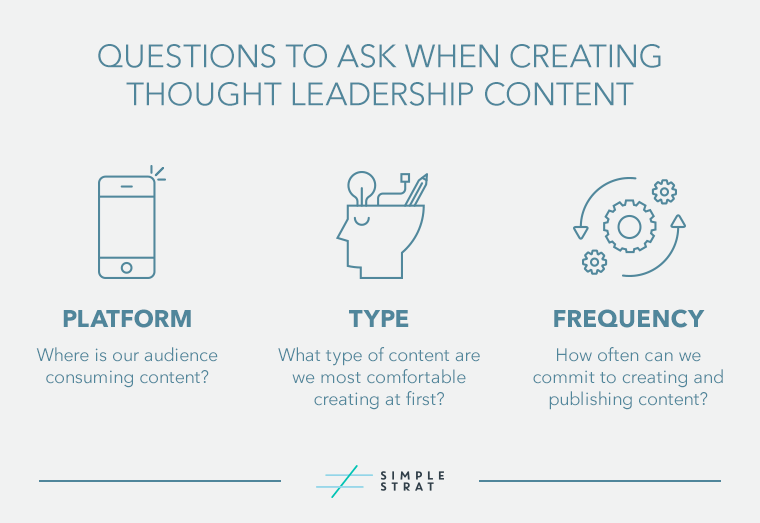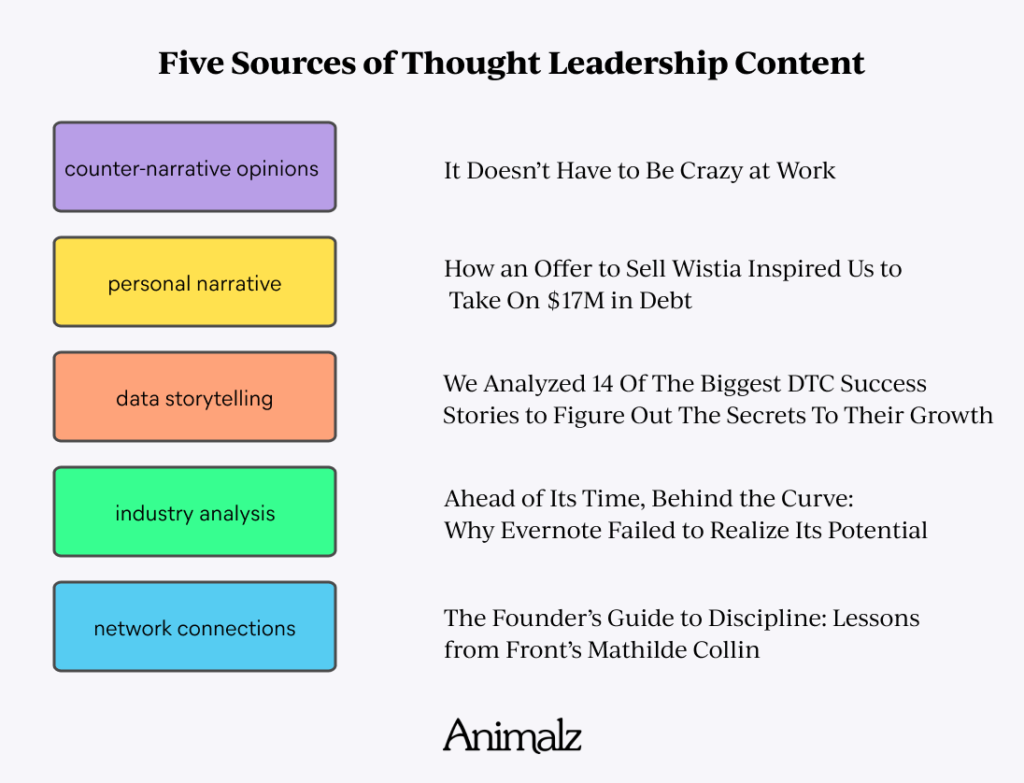How to Write Thought Leadership Content: 10 Simple Tips

Table of Contents
- What Are Some Thought Leadership Content Examples?
- 10 Pro-Tips on How to Write Thought Leadership Content
- Key Takeaways
- Conclusion
- FAQs
Thought leadership content is persuasive and powerful. Quality thought leadership content helps you emerge as an authority in your specific niche, while also driving a significant number of leads. Before we get to the part where we discuss how to write thought leadership content, let’s talk about thought leaders. A thought leader is essentially a person or company that is an expert in a field. For example, Neil Patel and Moz are looked at as thought leaders in the SEO and online marketing space.
Thought leadership is the process of establishing your authority on a subject. This is done by creating educational content, providing useful advice and tips, and being in the know of everything to do with that subject.

Thought leadership involves creating valuable content consistently and regularly. If you succeed at creating effective thought leadership content, you can improve engagement, lead generation, brand value, and even sales. Let’s look at some excellent examples of thought leadership content in the next section.
What Are Some Thought Leadership Content Examples?
As thought leaders, choosing the right form of content is crucial. Are you wondering what type of content to create for your thought leadership blog? Here are some examples.
- Informative blogs
- Workshops
- ebooks
- Guest blogs
- White papers
- Webinars
- Podcasts
- Online courses
- Explainer videos
- Live sessions
- Q&A sessions
- Case studies
- Speeches, talks at conferences, and panel discussions
- Industry updates
- Interviews
- Personal success stories
- Personal failure stories people can learn from
- Infographics
- Tips, hacks, and tricks showing proven results
For a more specific example, look at all the content Gary Vaynerchuk puts out across different platforms. It’s a good thought leadership content example.
10 Pro-Tips on How to Write Thought Leadership Content
Being a thought leader is a lifestyle, and it’s no easy feat. It needs you to be consistent with your content strategy efforts, and ensure your communication with your audience does not go awry at any point in time. One look at a few examples of thought leadership content, and you’ll realize that in order to craft such pieces, you need to be extremely focused on your niche and write content that is credible. Here are ten great tips on how to write thought leadership content.

1. Stick to your niche
If you want to be a thought leader, then you must have a niche that you know like the back of your hand. Don’t try to diversify, because that will backfire. By trying to widen your niche, you’re defeating the purpose of being a thought leader.
2. Don’t forget who you’re writing for
Your audience is key. As a thought leader, you need to know what they need, what they’re going to need in the future, and how to get it to them. The content you create is essentially answering their questions. And remember—when in doubt, just ask your audience what kind of content they want you to create.
3. Back your content with data
Numbers always create an impact. When you supplement your content with data, it holds a lot more value. Throw in some well-researched statistics, graphs, and analytics. Doing so will make your content more reliable, authentic, and valuable.
4. Establish your voice
Since thought leadership involves a significant amount of personal branding, you need to write in your voice. Establish a brand language, and speak in an authoritative and relatable tone.
5. Add value
Thought leadership isn’t only about writing content. It’s about constantly adding value to your audience’s life. To do that, you need to be actively involved in creating a variety of platform-specific content across platforms. For example, in addition to a blog, run a newsletter or a podcast, and maybe write an ebook too.
6. Research is key
Always conduct research, double-check facts, and stay updated on your subject. As a thought leader, you can’t afford to go wrong with your facts.
7. Make it interesting
Make sure you’re supporting your content with amazing visuals. You could lose out on significant readership if you don’t. Use infographics, GIFs, memes, videos, etc., to make your content more fun and consumable.
8. Be active on social media
Having an account on social media is not enough. You need to be active too. Post about your subject, run Q&A sessions, conduct live sessions, and give out useful advice.
9. Create a schedule and stick to it
Plan a calendar for all your content publishing activities, and make sure you follow it. Create a separate calendar for each platform. Include all necessary details in the calendar. Wherever possible, schedule posts in advance. It can be easy to get distracted. However, if you have a calendar ready, it might be easier to stick to it.

10. Never stop brainstorming
You need to create a large amount of content on a regular basis. So, you need to have your thinking cap on, all the time. Make sure you pen down every idea you get, because ideas disappear as fast as they appear. It’s also a good idea to keep track of what your competitors and other industry experts are saying and doing. However, don’t copy their ideas.
Key Takeaways
- Thought leadership content can help an individual or business expand their community, build a brand identity, and improve lead generation.
- It’s a long process that requires time, effort, and various types of content.
- If you don’t already have a niche, you must establish one before thinking about becoming a thought leader.
- Always keep your audience in mind while creating content.
- Attention to detail—whether it’s the tone and voice in which you write, or proofreading and fact-checking—is key.
- Ideally, you should create various forms of content across different platforms.
- Keep brainstorming content ideas, jot down your ideas, and create a detailed content calendar.

FAQs
Thought leadership content is helpful, educational content related to a particular field, coming from a person or entity that is considered an expert on the subject.
Blogs, guest posts, interviews, seminars, conference talks, ebooks, podcasts, workshops, white papers, success stories, and Q&A sessions are some examples of thought leadership content.
Creating thought leadership content allows you to be seen as a reliable source of information and advice in your area of expertise. It also helps drive a greater number of leads.
Maintain an authoritative, yet relatable tone. Back your content with numbers. Write what your audience wants you to write about. It is also essential to keep track of what your competitors are doing in the same niche, the insights from which you can use to polish your own strategy.
Thought leadership articles can and should be published on various platforms. Post them on your blog, LinkedIn, Medium, other relevant websites as guest articles, and any other platform on which your audience is present.
Latest Blogs
Learn how to rank on AI search engines like ChatGPT, Perplexity, and Gemini by optimizing your content for authority, structure, and relevance. Stay ahead in AI-driven search with this strategic guide.
Explore the best healthcare SEO services for your medical practice. Improve online visibility and effectively reach more patients in need of your services.
Discover top social media agencies specializing in banking solutions, enhancing financial services and driving engagement.
Get your hands on the latest news!
Similar Posts

B2C Marketing
5 mins read
Top Choices for Best Content Marketing Services in B2B Industries

Artificial Intelligence
5 mins read
How A Lead Generation Specialist Can Use AI-Powered Content Funnels to Drive Conversions

Artificial Intelligence
4 mins read